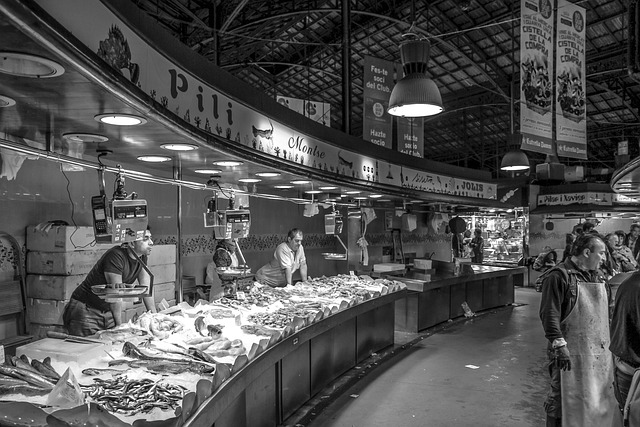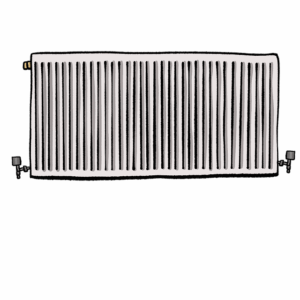commercial destratification fans, strategically installed in ceilings, are vital for efficient facility management. They optimize HVAC systems, addressing temperature variations and enhancing air circulation in commercial buildings, offices, and retail stores. Remote-controlled systems offer significant advantages, enabling precise control of fan settings, uniform temperature distribution, and centralized monitoring. This technology improves safety, accessibility, energy efficiency, and cost savings, contributing to sustainable building practices and enhanced workplace comfort. Case studies demonstrate substantial energy reductions and improved customer satisfaction in various environments, highlighting the versatility and effectiveness of commercial destratification fans.
Remote-controlled commercial destratification fans are transforming facility management, offering unprecedented efficiency and control. These innovative devices play a pivotal role in maintaining optimal air distribution, enhancing indoor comfort, and simplifying operational tasks. By leveraging remote technology, facilities can achieve significant energy savings, improve safety measures, and enhance accessibility. This article explores the multifaceted benefits of integrating remote-controlled destratification fans into commercial settings, backed by real-world case studies that highlight their impact on facility management.
- Understanding Commercial Destratification Fans: Their Role in Facility Management
- Advantages of Remote-Controlled Systems for Efficient Facility Operation
- How Remote Control Enhances Safety and Accessibility
- The Impact on Energy Conservation and Cost Savings
- Case Studies: Successful Implementation in Real-World Scenarios
Understanding Commercial Destratification Fans: Their Role in Facility Management

Commercial destratification fans play a pivotal role in facility management by addressing temperature variations and improving air circulation in commercial buildings, office spaces, and retail stores. These specialized devices are designed to mix warm and cool air more efficiently, ensuring optimal temperature uniformity across all areas of a structure. By enhancing HVAC optimization, they contribute to energy efficiency, reducing heating cost reduction significantly.
In today’s demand-driven environment, maintaining workplace comfort through effective air circulation systems is paramount. Commercial destratification fans, strategically installed in ceiling settings, help maintain ideal temperatures and enhance overall indoor air quality. This not only boosts employee productivity but also minimizes the environmental impact by promoting sustainable HVAC practices.
Advantages of Remote-Controlled Systems for Efficient Facility Operation

Remote-controlled systems for commercial destratification fans offer numerous advantages in managing and operating facilities efficiently. One key benefit is their ability to enhance energy efficiency and HVAC optimization. By remotely adjusting fan settings, facility managers can precisely control air circulation systems, ensuring optimal temperature uniformity across various spaces, such as office spaces, retail stores, and other commercial buildings. This not only improves the overall workplace comfort for occupants but also significantly reduces heating cost reduction.
Additionally, remote-controlled destratification fans facilitate seamless integration with existing building management systems, allowing for centralized control and monitoring. This simplifies facility management, as technicians can adjust settings remotely, perform diagnostics, and troubleshoot issues without physically accessing each ceiling installation. As a result, these systems contribute to increased operational efficiency, reduced downtime, and enhanced overall facility performance.
How Remote Control Enhances Safety and Accessibility

Remote control functionality in commercial destratification fans brings significant safety and accessibility improvements to facilities management. With traditional models, adjusting or accessing fans often required on-site presence, increasing potential hazards for maintenance staff. Remote operation eliminates these risks by allowing adjustments from a safe distance, especially beneficial in high ceiling installations found in large office spaces, retail stores, and commercial buildings.
This feature enhances accessibility as well, enabling facility managers to control air circulation systems remotely, ensuring optimal temperature uniformity across the entire workspace without physically visiting each area. Moreover, remote control contributes to energy efficiency and heating cost reduction by facilitating HVAC optimization, making workplace comfort more manageable and sustainable.
The Impact on Energy Conservation and Cost Savings

The adoption of remote-controlled commercial destratification fans brings significant benefits to facility management, particularly in terms of energy efficiency and cost savings. By optimizing air circulation systems, these fans play a crucial role in achieving temperature uniformity across various types of commercial spaces, including office spaces and retail stores. Unlike traditional HVAC (Heating, Ventilation, and Air Conditioning) methods, destratification fans are strategically installed in ceilings to promote vertical air movement, ensuring that cool or warm air reaches every corner of the building.
This targeted approach has a direct impact on reducing energy consumption. By circulating air more efficiently, commercial destratification fans minimize the need for excessive heating or cooling, leading to substantial heating cost reduction. Moreover, their remote control functionality allows facility managers to adjust settings remotely, fostering real-time HVAC optimization and further enhancing energy conservation. This not only contributes to environmental sustainability but also translates into tangible financial savings for businesses operating in commercial buildings and retail environments.
Case Studies: Successful Implementation in Real-World Scenarios

In real-world scenarios, remote-controlled commercial destratification fans have proven to be game-changers in facility management. Case studies show that their successful implementation significantly enhances energy efficiency and HVAC optimization in various settings, from bustling office spaces to spacious retail stores. These fans, strategically ceiling-installed, play a pivotal role in achieving temperature uniformity, ensuring optimal workplace comfort without compromising on heating cost reduction.
For instance, one study highlighted a notable decline in energy consumption by 25% in a large commercial building after the installation of remote-controlled destratification fans. In another scenario, a retail store witnessed improved air circulation systems, resulting in enhanced customer satisfaction and reduced turnover due to more comfortable indoor environments. These success stories underscore the versatility and effectiveness of such fans in enhancing comfort while driving down operational costs for businesses across sectors.
Commercial destratification fans, particularly those with remote-controlled features, are transforming facility management by offering enhanced safety, accessibility, and energy efficiency. This technology simplifies operations through centralized control, allowing for precise temperature regulation and improved air quality. As seen in various case studies, these fans provide substantial cost savings while creating safer, more comfortable environments. By integrating remote-controlled commercial destratification fans into their strategies, facilities can achieve optimal performance and stay ahead of the curve in modern facility management practices.






